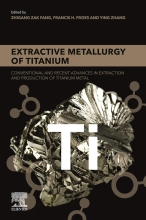Surface Engineering of Metals provides basic definitions of classical and modern surface treatments, addressing mechanisms of formation, microstructure, and properties of surface layers.
Part I outlines the fundamentals of surface engineering, presents the history of its development, and proposes a two-category classification of surface layers. Discussions include the basic potential and usable properties of superficial layers and coatings, explaining their concept, interaction with other properties, and the significance of these properties for proper selection and functioning.

